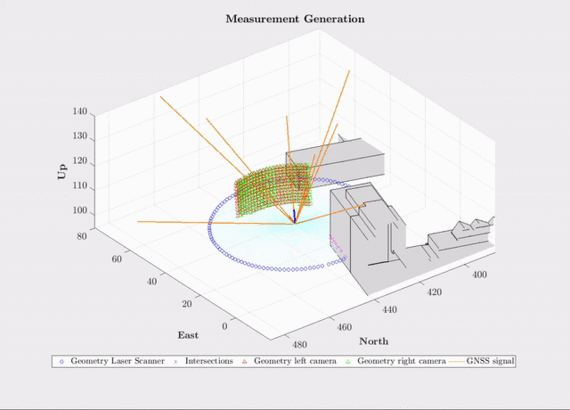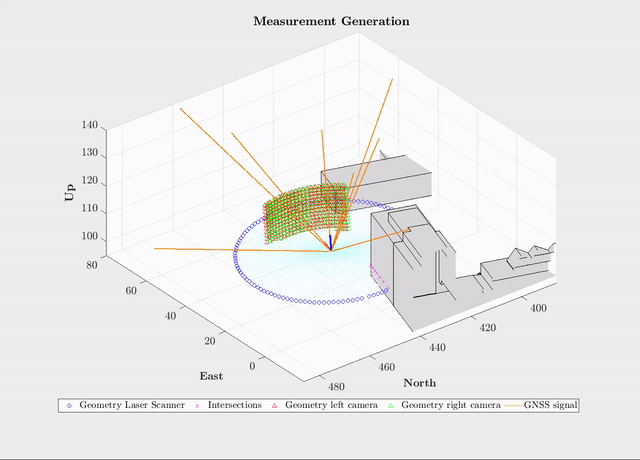Dr.-Ing. Nicolas Garcia Fernandez
Supervisor: S. Schön
Until now, the research has been focused on the development of adequate simulation tools for the investigation of dynamic networks defined by collaborative multi-sensor systems. A simulation environment was developed and successfully validated that enables the cost-effective reproduction of a wide variety of realistic collaborative scenarios. Here, all sensor measurements simulated are fused in a plane-based Collaborative Extended Kalman Filter (C-EKF), in which 3D maps are used in order to represent the environment (Garcia-Fernandez et al., 2019; Garcia-Fernandez and Schön, 2019). Also, the improvements of using collaborative navigation with respect to single-vehicle approaches were assessed both locally (one node) and globally (whole network), in terms of accuracy, precision and integrity.
However, two critical topics remain not only as open paths for research, but also general open questions:
- The impact that time-synchronization delays between multi-sensor systems have on the network.
- The suitability of the multi-vehicle algorithm for the detection and exclusion of gross errors (internal reliability), as well as the assessment of the impact produced by undetected ones on the overall performance of the dynamic network (external reliability).
Objectives and Methodologies
Firstly, the simulation framework capabilities can be enhanced in such a way that it will be suited to make a smooth transition to real data analysis. Mainly, the work-flow is focused on:
- the generation and detection of outliers (performing reliability Kalman Filter-based reliability tests),
- the addition of pole landmarks,
- the improvement of both the motion and process noise models used (achieving a more robust multi-modal estimation), and
- the consideration of asynchronous measurements
Secondly, it is crucial to validate the conclusions obtained from the simulation framework with real data. Therefore, the developed methodologies for CN are tested in a multi-robot experiment carried out in a perfectly known environment. This way, both methodologies, localization and SLAM, can be correctly assessed. Finally, the benefits of CN with respect to single-vehicle methodologies are assessed in terms of the navigation performance criteria (accuracy, precision, reliability, integrity, continuity and availability).



References
Garcia-Fernandez, N., Alkhatib, H. and Schön, S., 2019. Collaborative Navigation Simulation Tool using Kalman Filter with Implicit Constraints. ISPRS Annals of the Photogrammetry, Remote Sensing and Spatial Information Science IV-2/W5, pp. 559–566.
Garcia-Fernandez, N. and Schön, S., 2019. Optimizing Sensor Combinations and Processing Parameters in Dynamic Sensor Networks. Proceedings of the 32nd International Technical Meeting of the Satellite Division of The Institute of Navigation (ION GNSS+ 2019) pp. 2048–2062.





